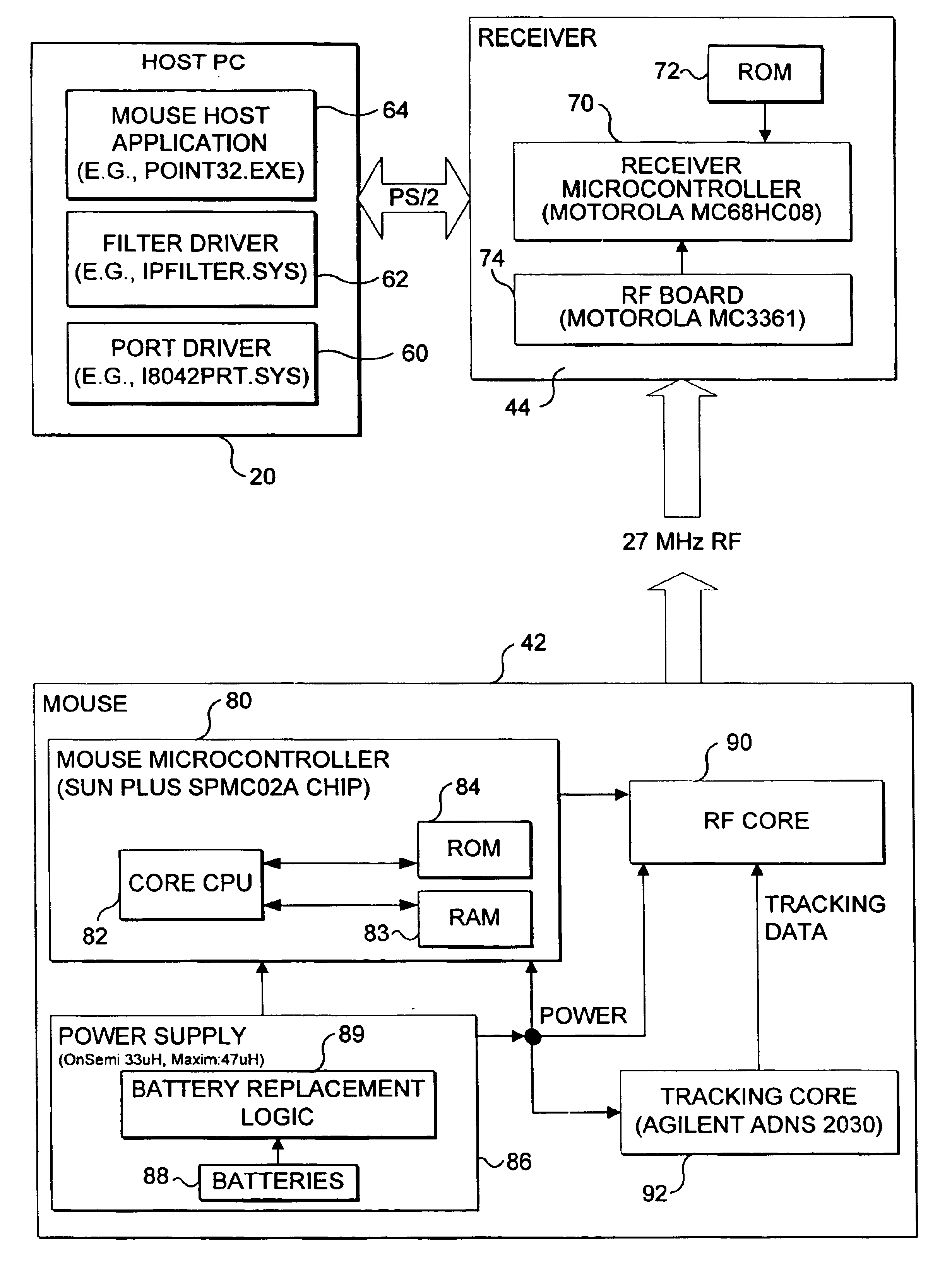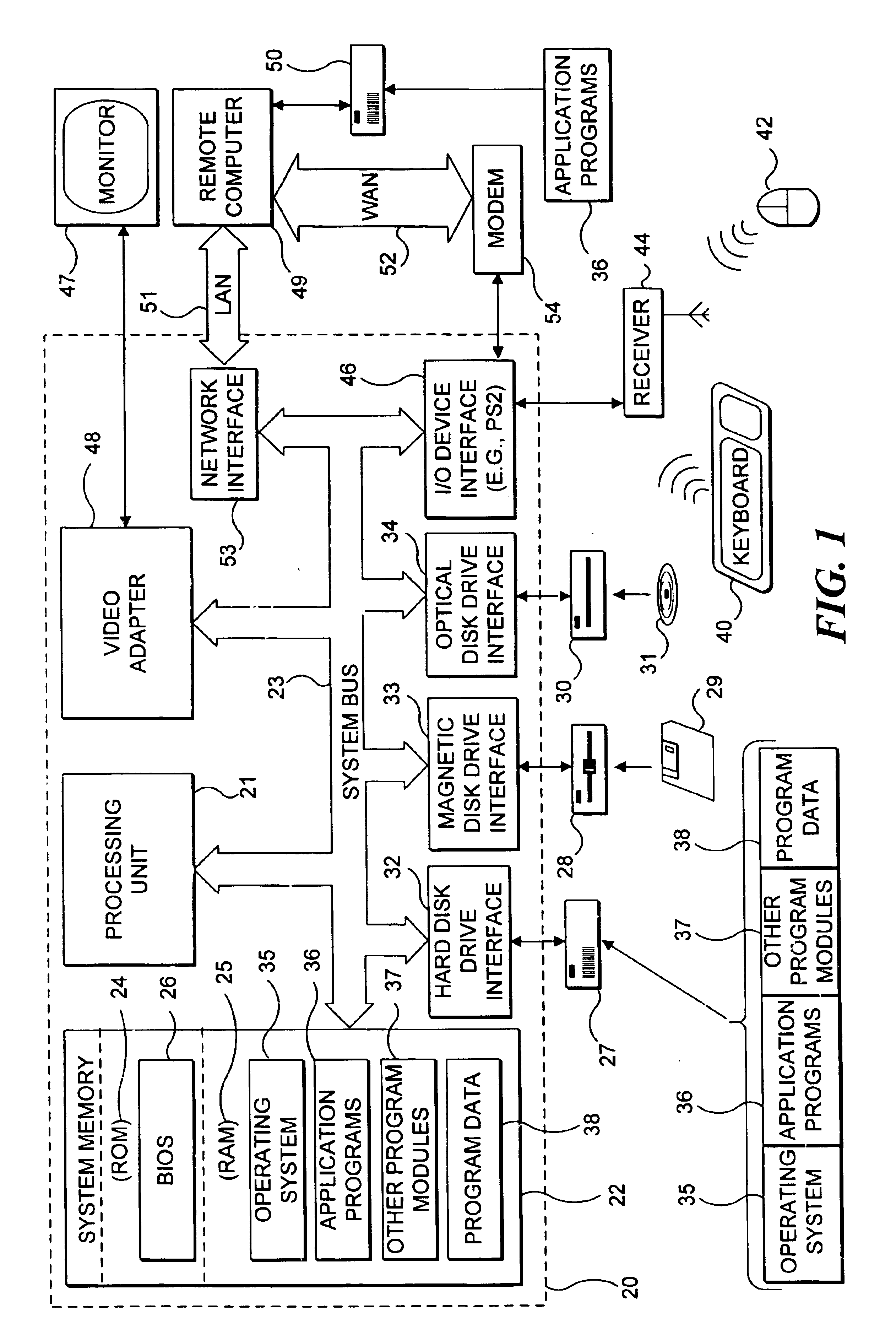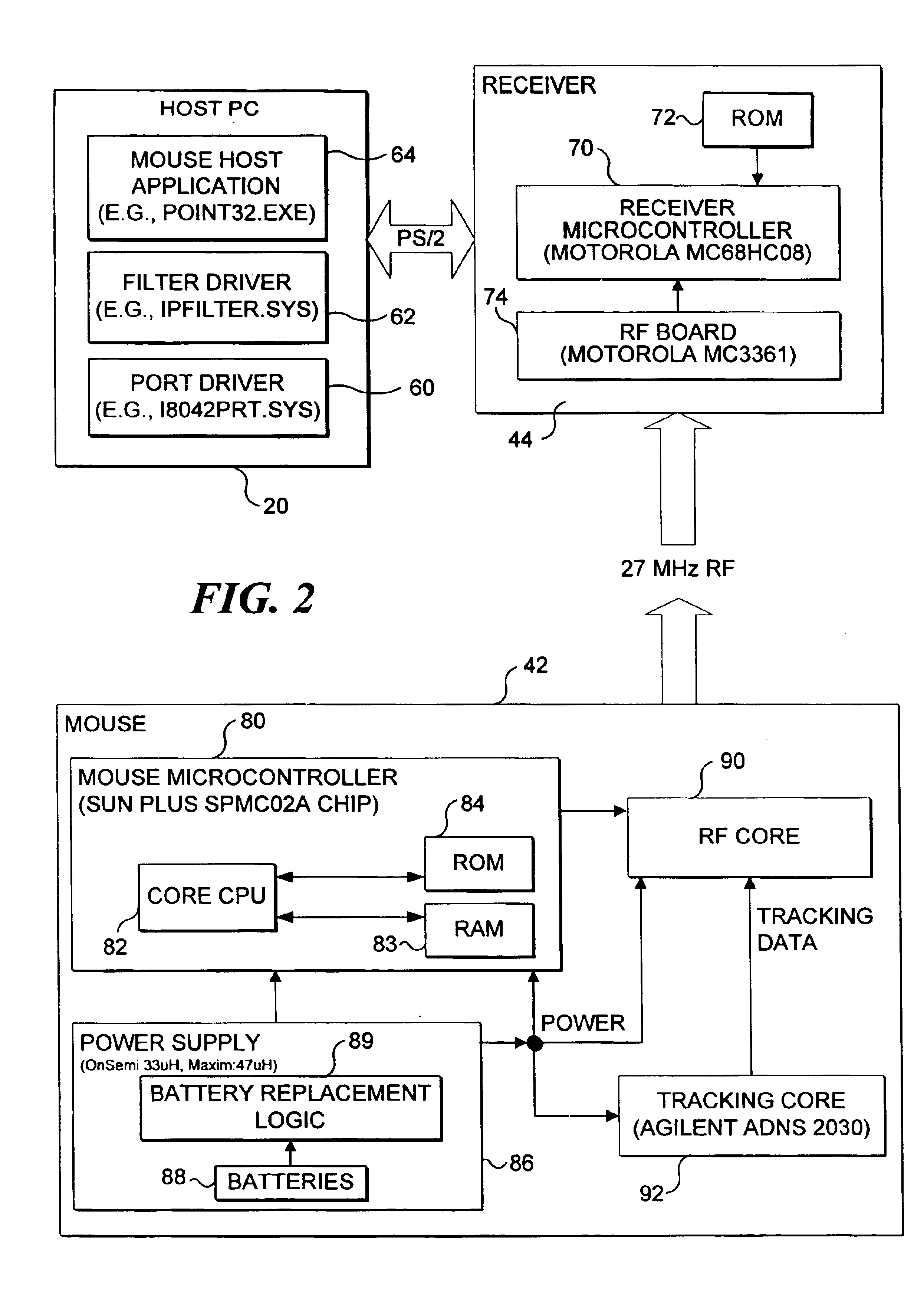Attribute reporting over a PS/2 protocol
a technology of attribute value and communication channel, applied in the direction of data processing power supply, instruments, computing, etc., can solve the problems of inability to obtain power from the host device, inability to extend the port driver to accommodate still more features, and inability to report attribute value of a device over a ps/2 communication channel
- Summary
- Abstract
- Description
- Claims
- Application Information
AI Technical Summary
Benefits of technology
Problems solved by technology
Method used
Image
Examples
Embodiment Construction
Exemplary Operating Environment
FIG. 1 and the following discussion are intended to provide a brief, general description of a suitable computing environment for use in implementing the present invention. Although not required, a portion of the present invention will be described in the general context of computer executable instructions, such as program modules that are executed by a PC or other processing device. Generally, program modules include routines, programs, objects, components, data structures, etc. that perform particular tasks or implement particular abstract data types. Those skilled in the art will appreciate that this invention may be practiced within other computing system configurations that uses the PS / 2 communication protocol or other protocol that does not include provisions for reporting numerical status. Such configurations may include multiprocessor systems, network PCs, pocket personal computing devices, game consoles, TV set-top boxes, hand held devices, per...
PUM
 Login to View More
Login to View More Abstract
Description
Claims
Application Information
 Login to View More
Login to View More - R&D
- Intellectual Property
- Life Sciences
- Materials
- Tech Scout
- Unparalleled Data Quality
- Higher Quality Content
- 60% Fewer Hallucinations
Browse by: Latest US Patents, China's latest patents, Technical Efficacy Thesaurus, Application Domain, Technology Topic, Popular Technical Reports.
© 2025 PatSnap. All rights reserved.Legal|Privacy policy|Modern Slavery Act Transparency Statement|Sitemap|About US| Contact US: help@patsnap.com



